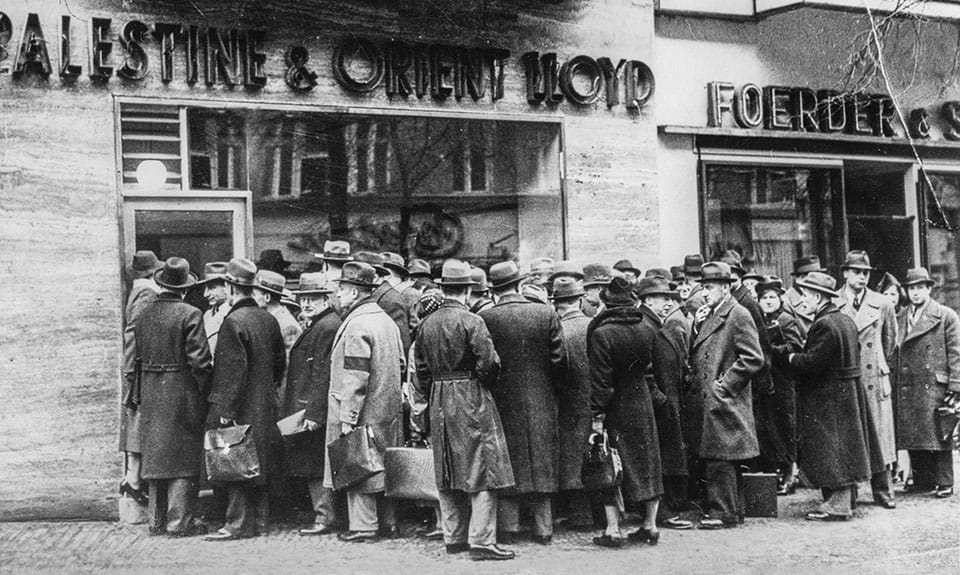Places of Exile
Mass flight after the terror of November
Emigration became mass flight after November 1938. Many emigration destinations sealed off their borders against Jewish refugees. In Germany, people desperate to obtain an exit visa fought against bureaucratic obstacles and state-supported plunder.
The Nazi state, thus, clearly pushed the emigration of Jewish citizens. However, their assets could not be transferred abroad but would accrue to the Reich accounts instead. Those fortunate enough to find exile therefore had to leave as destitute refugees, without any chance of using their own savings to start their lives over.

Attractive, but difficult to reach: The Anglo-American nations
Great Britain and the USA were the most significant and desirable countries for exiles. Over 200,000 persecuted Jews fled there during the Nazi period. Immigration, however, was extremely difficult due to bureaucratic obstacles, even though both countries loosened their immigration requirements in late 1938. Canada strictly closed off against Jewish refugees in the 1930s and 1940s.
Due to a lack of alternatives: Latin America
Visa entry requirements varied throughout the nations of Latin America. The climate, social relationships and political situations also differed strongly. Argentina, Brazil and Chile were preferred countries of exile. Many refugees, driven by necessity, also went to tropical or very poor countries such as Bolivia. They hoped to be able to continue on to other destinations, for example to the USA.
Land of Promise: Palestine (Israel)
Only the USA accepted more refugees than the British Mandate territory of Palestine. About 60,000 Jews from Germany and Austria emigrated there between 1933 and 1941. Jewish emigration to Palestine was governed by a system of certificates, which included a capitalist certificate and a youth certificate.
Destination of last resort: Southeast Asia, Australia
This remote region was unpopular as a destination for those fleeing Europe. The ship passages were expensive, climatic, hygienic and social conditions were difficult, and the culture seemed outlandish. Yet, as more and more countries closed their borders, tens of thousands of Jews fled there after the November pogrom. Well over 18,000 German-speaking refugees landed in Shanghai.